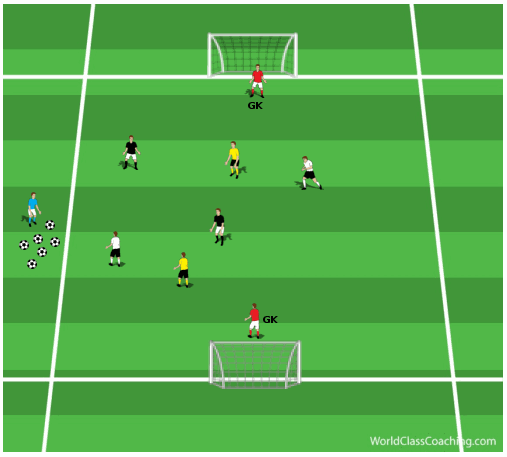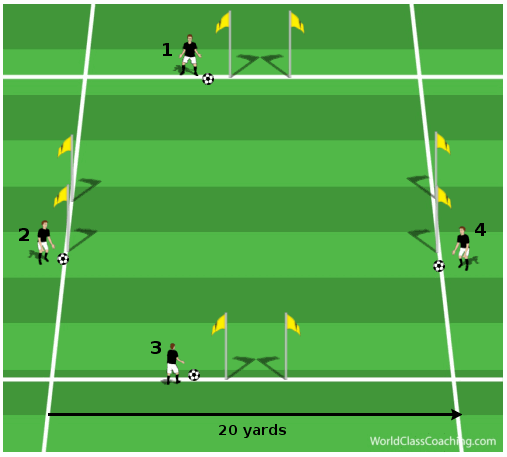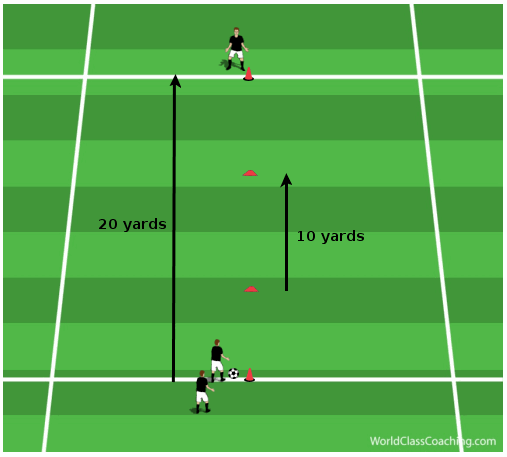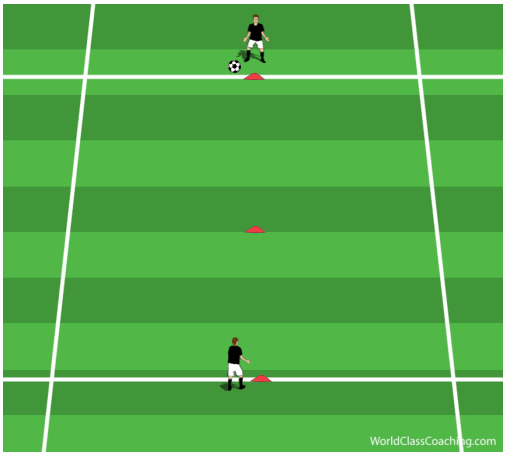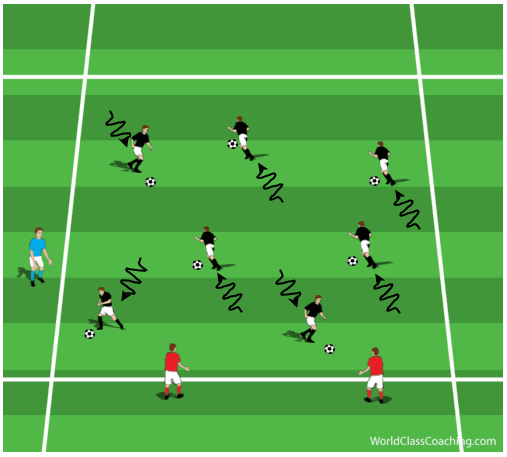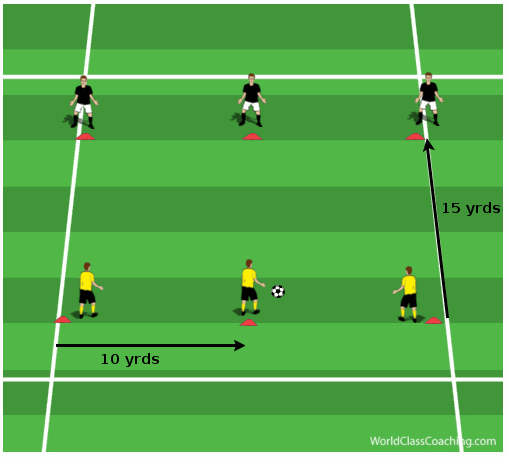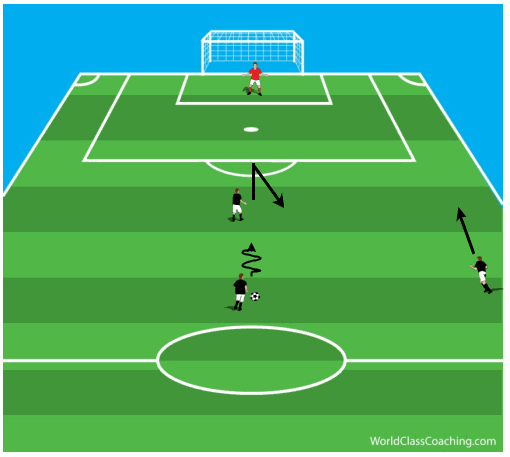Developing Anaerobic Endurance and Finishing Skills with a Simple 2 v 2 v 2 Small-Sided Game
By Justin Cresser Author of Total Soccer Conditioning: A Ball Orientated Approach
I was speaking to a coach earlier in the season and he said his team was playing really well but was having problems finishing. I thought to myself: “that’s a problem for so many teams”. Over the past few weeks I have been to, and analyzed, several games, and finishing really does seem to be a problem for so many teams. I have seen some spectacular displays of dribbling and combination play, but the players just can’t seem to get the ball into the back of the net.
In today’s exercise we will address the above problem with a simple 2 v 2 v 2 small-sided game that focuses on finishing. As with any other technique or skill, I believe the key to improving your player’s ability to finish is repetition. The format and structure of the exercise also allows your players to develop their anaerobic capacity. This is an excellent activity to use during the competitive season when match-preparation takes a high priority.
Set-up and Directions:
Divide your players into two groups of 6 players and then further divide each group into three teams of two. Make certain to give each team of two a different colour shirt. Set up a grid 40 yards long and 25 yards wide with a regular-sized goal (or large net) at both ends of the grid. There should be a goalkeeper in each net. One group of 6 plays at a time. The coach should stand on one of the sidelines with a large supply of balls (Figure 1).
Play is initiated with the coach playing a ball into any of the six players. It is each team for themselves. Players can score on either
Continue reading
